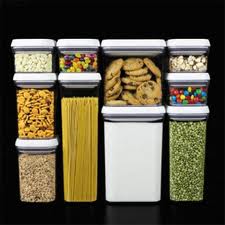
Think storing is silly and a little too “doomsday thinking” for you? Preparing for disasters doesn’t just mean Hollywood-style calamities or Biblical plagues; storing food and consumables can get you through those personal trials as well. Whether something as simple as a cold that has you shut in, a job loss, or a death in the family; storing the things that you know you will use anyway, means you are prepared for whatever life throws at you.
trials as well. Whether something as simple as a cold that has you shut in, a job loss, or a death in the family; storing the things that you know you will use anyway, means you are prepared for whatever life throws at you.
Need more convincing? Building up stores of those daily necessities is a capital deferment – you were going to buy it and consume it anyway. Storing food and the consumable items you will use from now until the day you are pushing up daisies, also means you are staying a step ahead of inflation on those items. Food, toilet paper, shaving razors, tooth paste, and deodorant rarely if ever go down in price. Building up stores also allows you to buy when it’s convenient and when things are on sale. The money adds up.
Still more reasons? A friend once told me he wanted to get his concealed handgun license. After listening to his reasons, I got stuck on his statement of, “I am only going to carry it in places I don’t feel safe.” I followed with two questions. First, why are you going places you don’t feel safe – a rhetorical question. My second, do you think life will only throw bad things at you when you are ready or expecting them? Storing is much the same. Most retail stores only stock enough goods for 72 hours, under normal conditions. It’s a principle called Just In Time Inventory. In the event of a disaster, these stores will get cleaned out in an average of two hours.
Copy canning is a term coined by one of the God Fathers of survival – Ron Hood. It’s the easiest and simplest method of storing up food and other consumables over time. Copy canning works like this: If you need a can of corn from the store, purchase two and stick one of them away in your pantry. Doing it this way, you’re buying things you know you will eat, and you’re doing it over time. Storing over time rather than trying to store up all at once has several advantages. First, you don’t drain the bank in a mad dash to stock up. Second, you get a chance to really consider the items you are storing and maybe try out some new ones.
in a mad dash to stock up. Second, you get a chance to really consider the items you are storing and maybe try out some new ones.
“Store what you eat and eat what you store,” is a popular expression amongst survivalists. The first half means you should try to store the things you already eat on a regular basis. The second half of the expression means to cycle through your stores. Set up your pantry like a supermarket, putting the newest items toward the back and pulling from the front to eat.
Shoring up your stores doesn’t just mean food and batteries either. People often don’t think to build up an inventory of everyday items that they will still need, whether in good times or bad. Hygiene and sanitary products will become that much more important when things get nasty.
will become that much more important when things get nasty.
Someone once asked me what was the oddest thing I stored. I told them I could name two; aloe toilet paper, and talcum powder. I sorely dislike regular toilet paper. As for the talcum powder, it’s humid here on the Gulf of Mexico and as a Project Appleseed Bootcamp mate once said, “Doggone Monkey-butt ain’t no laughing matter. I would have given darn near anything for a bottle of Gold Bond.” He went on to tell me about a bad case of Monkey-butt he had during his first tour in Iraq, but I will spare you that which was not spared me. The things you use everyday are the things you will want to store. You will never understand just how much you miss them till you can’t have them. Don’t find out that way.
While not something that most people eat on a regular basis, freeze-dried foods and MREs can work as part of a smart food-storage plan. The advantage to these foods is that they last a long time when stored properly. Also, they don’t take up much room and can be stored in a box in the bottom of your pantry. Rotate these through your BOB or other grab bag when you do your regular inventory and assessment. Also – don’t forget to store water; for the freeze-dried stuff and also as emergency hydration. Some of the square or rectangular jugs stack well and can be tucked away with your food stores.
*
Related Stories from The Inner Circle
Survival Resources: Books and DVDs
Keeping Your Pet Alive in a Disaster
Bug Out Bag Basics
